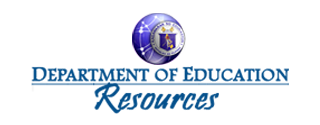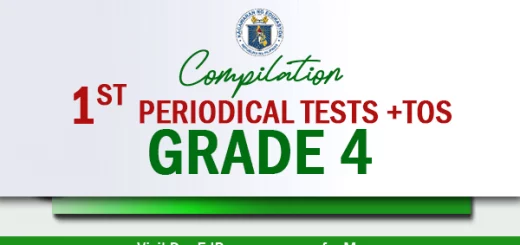GRADE 7 MATATAG – 1st Periodical Tests – All Subjects with TOS | SY 2024-2025
Good day and welcome! Here’s an update on our GRADE 7 MATATAG – 1st Periodical Tests – All Subjects with TOS | SY 2024-2025.. Our goal is to keep updating and publishing ready-made K–12 teachers’ and students’ files.
Assessment of Learning
Instruction in the classroom is generally divided into three essential parts: the “why,” the “how” and the “what.” The “why” refers to the purposes of instruction, the “how” is expressed through plans and the “what” is demonstrated in practice. Classroom instruction and assessment are shaped by four main components: input factors, plans, practices and purposes.
Instructional objectives are set by teachers to guide their lessons. These objectives not only direct the structure of the lessons but also provide a way to measure whether students have achieved the intended learning outcomes. They serve as benchmarks for evaluating student progress and the effectiveness of teaching. There are various types of objectives that can guide instruction including language, strategic, socio-affective, philosophical and method or process objectives.
Language objectives define the specific language skills students are expected to develop during lessons. Strategic objectives focus on developing critical thinking, learning, and communication skills. These objectives refer to conscious processes that help students comprehend, acquire and retain new skills and concepts.
Socio-affective objectives target changes in students’ social behaviors, such as their attitudes toward the target language or their own native language. These objectives, however, are often secondary to language learning goals. Philosophical objectives which aim to influence students’ attitudes, values and beliefs are broader in scope than socio-affective ones.
Finally, technique or process objectives describe the methods, materials or activities used in instruction. These objectives though valuable, do not always directly improve classroom learning. Strategic objectives are important for understanding student performance but remain secondary to language learning as effective strategies should ultimately enhance second language acquisition. Therefore, the evaluation of second language instruction is mainly based on language objectives.

GRADE 7 MATATAG – 1st Periodical Tests – All Subjects with TOS | SY 2024-2025
- GRADE 4 MATATAG – 1st Periodical Test in ARALING PANLIPUNAN
- GRADE 4 MATATAG – 1st Periodical Test in ENGLISH
- GRADE 4 MATATAG – 1st Periodical Test in FILIPINO
- GRADE 4 MATATAG – 1st Periodical Test in MAPEH MUSIC AND ARTS
- GRADE 4 MATATAG – 1st Periodical Test in MAPEH PE AND HEALTH
- GRADE 4 MATATAG – 1st Periodical Test in MATHEMATICS
- GRADE 4 MATATAG – 1st Periodical Test in SCIENCE
- GRADE 4 MATATAG – 1st Periodical Test in TLE
 Learn about the information we collect and how it's used.
Learn about the information we collect and how it's used. Discover how we protect your data.
Discover how we protect your data. Understand your rights and choices regarding your personal information.
Understand your rights and choices regarding your personal information.














